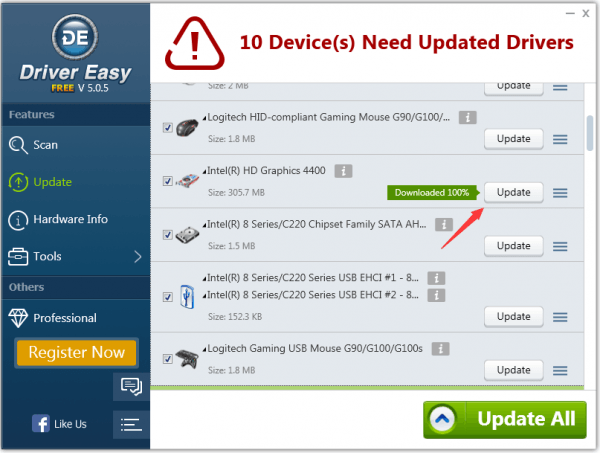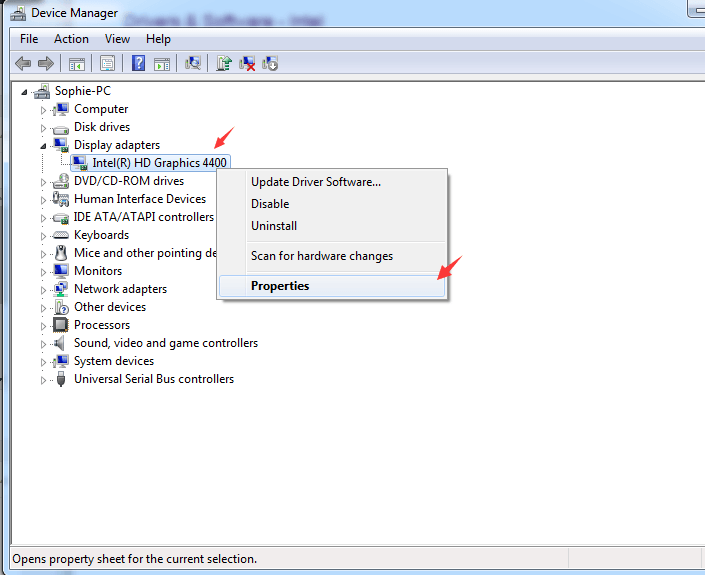
- Solve a problem with intel graphics driver windows 8.1 install#
- Solve a problem with intel graphics driver windows 8.1 drivers#
- Solve a problem with intel graphics driver windows 8.1 driver#
- Solve a problem with intel graphics driver windows 8.1 windows#
If this is the case, you can resolve this issue by simply increasing the TDR timeout for your GPU, which can be done by editing your computer’s registry.
Solve a problem with intel graphics driver windows 8.1 driver#
If you are seeing the error message quite often, a pretty plausible cause may be that TDR’s set timeout is just too little for your GPU to respond in time, which is why the display driver reboot is triggered over and over again.
Solve a problem with intel graphics driver windows 8.1 windows#
TDR ( Timeout Detection and Recovery) has a set time period at the end of which, if a Windows computer’s GPU does not respond, the feature reboots the display drivers, at which point the “Display driver stopped responding and has recovered” error message is displayed. Solution 3: Increase the TDR timeout for your GPU
Solve a problem with intel graphics driver windows 8.1 install#
If such a version is available, download and install it, and then check to see if that fixes the problem.
Solve a problem with intel graphics driver windows 8.1 drivers#
To check to see if a newer version of your computer’s graphics drivers is available, log on to the official website of your GPU’s manufacturer, head on to the Downloads or Support section and see if a newer version of graphics drivers for your specific GPU is available. If a newer version of the graphics drivers on your computer is available for your computer, downloading and installing them may just be able to fix this problem for you. Once the drivers have been reinstalled, check to see whether or not the problem has been resolved. However, if the computer doesn’t do so, simply log on to the official website of your GPU’s manufacturer and locate, download and install them yourself. Once your computer boots up, it should automatically reinstall the same version of the graphics drivers. If you have more than one graphics driver, do the same for every one of them. Right-click on your graphics drivers, click on Uninstall and then go through the uninstallation wizard to uninstall the drivers. In the Device Manager, expand the Display adapters

Type devmgmt.msc into the Run dialog and press Enter to launch the Device Manager. Press the Windows Logo key + R to launch a Run If you want to solve this problem, the following are the most effective solutions that you should try: Solution 1: Uninstall and then reinstall your graphics drivers Thankfully, though, the “Display driver stopped responding and has recovered” error message can be fixed as long as it is not caused by a defective GPU. However, if you start seeing the “Display driver stopped responding and has recovered” error message pretty often, there might be a pretty serious underlying issue. If you happen to see the “Display driver stopped responding and has recovered” error message once in a blue moon, there is no cause for alarm. This issue is known to affect all versions of the Windows Operating System from Windows XP to Windows 10. Some of the most common causes of the “Display driver stopped responding and has recovered” error message are a lot of programs and applications running and stressing the GPU, a problem with the affected computer’s display drivers and an overheating GPU.


This happens when a feature known as Timeout Detection and Recovery (TDR) determines that the GPU has not responded within the allotted period of time and restarts the display drivers in order to save the user the trouble of restarting the computer entirely. Sometimes, a Windows computer may become incredibly sluggish during use, followed by the computer’s screen going off and then turning back on again, at which point an error message stating that the “ Display driver stopped responding and has recovered” can be seen in the Notification Area in the bottom-right corner of the screen.


 0 kommentar(er)
0 kommentar(er)
